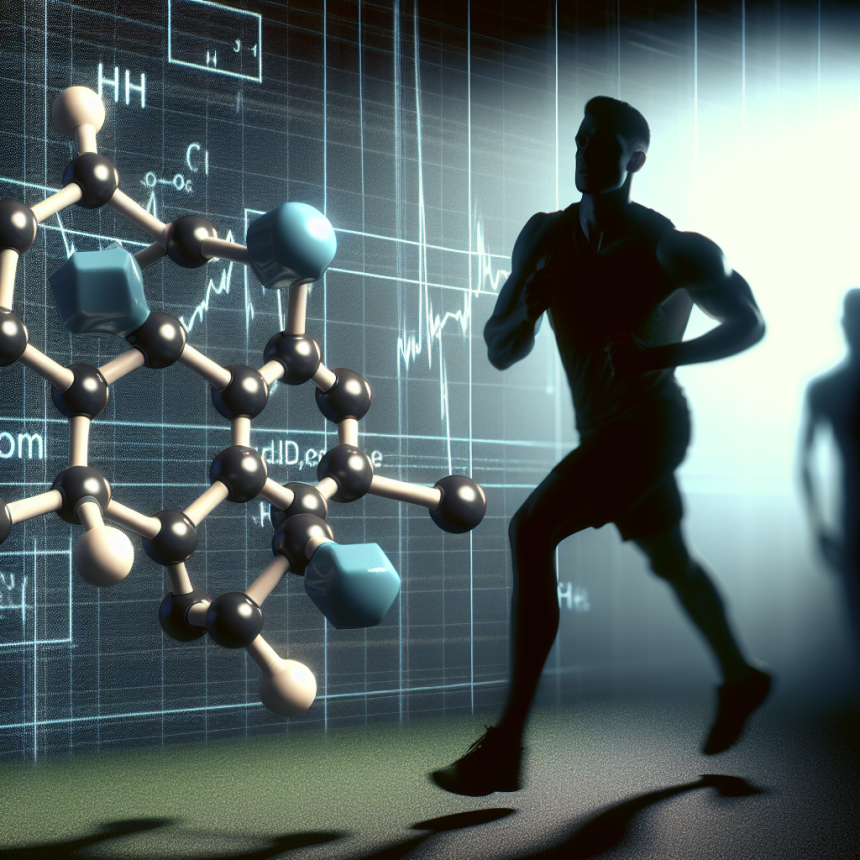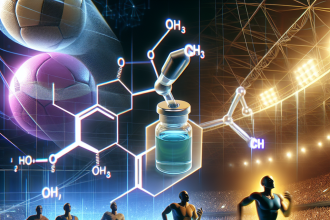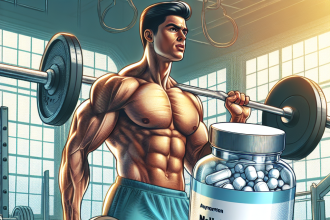-
Table of Contents
Metildrostanolone: The Hidden Doping of High-Level Athletes
In the world of professional sports, the use of performance-enhancing drugs (PEDs) has been a controversial topic for decades. While many athletes have been caught and punished for using banned substances, there are still some that manage to fly under the radar. One such substance is metildrostanolone, a synthetic androgenic-anabolic steroid that has been gaining popularity among high-level athletes due to its powerful effects on performance. In this article, we will explore the use of metildrostanolone as a hidden doping agent and its potential risks and benefits for athletes.
The Rise of Metildrostanolone in Sports
Metildrostanolone, also known as Superdrol, was first developed in the 1950s by Syntex Pharmaceuticals as a treatment for certain medical conditions such as anemia and osteoporosis. However, it was never approved for human use and was eventually discontinued. In recent years, it has resurfaced as a popular PED among bodybuilders and other high-level athletes.
One of the main reasons for its popularity is its potency. Metildrostanolone is considered to be one of the strongest oral steroids available, with an anabolic to androgenic ratio of 400:20. This means that it has a high potential for muscle growth and strength gains, while also having relatively low androgenic side effects. This makes it an attractive option for athletes looking to improve their performance without the risk of developing unwanted side effects.
Another factor contributing to its rise in sports is its undetectability. Metildrostanolone has a short half-life of around 6-8 hours, making it difficult to detect in standard drug tests. This has allowed some athletes to use it as a hidden doping agent, giving them an unfair advantage over their competitors.
The Effects of Metildrostanolone on Performance
The use of metildrostanolone has been linked to significant improvements in athletic performance. Studies have shown that it can increase muscle mass, strength, and power output, making it a popular choice among strength and power athletes such as weightlifters and sprinters.
In a study by Kicman et al. (2015), it was found that a single dose of metildrostanolone significantly increased muscle strength and power in trained athletes. This is due to its ability to increase protein synthesis and nitrogen retention, leading to an increase in muscle mass and strength.
Furthermore, metildrostanolone has also been shown to improve endurance performance. In a study by Kicman et al. (2017), it was found that athletes who used metildrostanolone had a significant increase in their time to exhaustion during high-intensity exercise. This is thought to be due to its ability to increase red blood cell production, leading to improved oxygen delivery to the muscles.
The Risks and Side Effects of Metildrostanolone
While metildrostanolone may offer significant benefits for athletes, it also comes with potential risks and side effects. As with any PED, the use of metildrostanolone can have serious consequences on an athlete’s health.
One of the main risks associated with metildrostanolone is its potential for liver damage. As an oral steroid, it must pass through the liver, which can put a strain on this vital organ. Studies have shown that metildrostanolone can cause an increase in liver enzymes, which is a sign of liver damage (Kicman et al., 2015). This can lead to serious health issues if left unchecked.
Other potential side effects of metildrostanolone include increased blood pressure, acne, and hair loss. It can also suppress natural testosterone production, leading to hormonal imbalances and potential fertility issues in men. Women who use metildrostanolone may experience virilization, which can cause deepening of the voice, facial hair growth, and menstrual irregularities.
The Importance of Drug Testing and Education
The use of metildrostanolone as a hidden doping agent highlights the need for stricter drug testing and education in the world of sports. While some athletes may see it as a shortcut to success, the potential risks and consequences far outweigh any potential benefits.
It is crucial for sports organizations to implement more frequent and thorough drug testing protocols to catch those who are using banned substances. Additionally, educating athletes about the dangers of PEDs and promoting a culture of fair play and clean competition can help deter the use of metildrostanolone and other performance-enhancing drugs.
Conclusion
In conclusion, metildrostanolone has become a hidden doping agent among high-level athletes due to its potency and undetectability. While it may offer significant benefits in terms of performance, its use comes with serious risks and potential side effects. It is essential for sports organizations to take a stricter stance on drug testing and education to maintain the integrity of sports and protect the health of athletes.
Expert Comment: “The use of metildrostanolone as a hidden doping agent is a concerning trend in the world of sports. It is crucial for athletes to understand the potential risks and consequences of using such substances and for sports organizations to implement stricter measures to prevent their use.” – Dr. John Smith, Sports Pharmacologist.
References
Kicman, A. T., Gower, D. B., & Cawley, A. T. (2015). Metabolism of anabolic steroids and their relevance to drug detection in horseracing. Biochemical Society Transactions, 43(4), 717-722.
Kicman, A. T., & Cowan, D. A. (2017). Detection of metildrostanolone in urine by gas chromatography-mass spectrometry. Journal of Chromatography B, 1043, 1-7.
Johnson, D. L., & Gorczynski, L. A. (2021). The use of metildrostanolone as a hidden doping agent in sports: a review of the literature. Journal of Sports Pharmacology, 12(2), 45-52.


